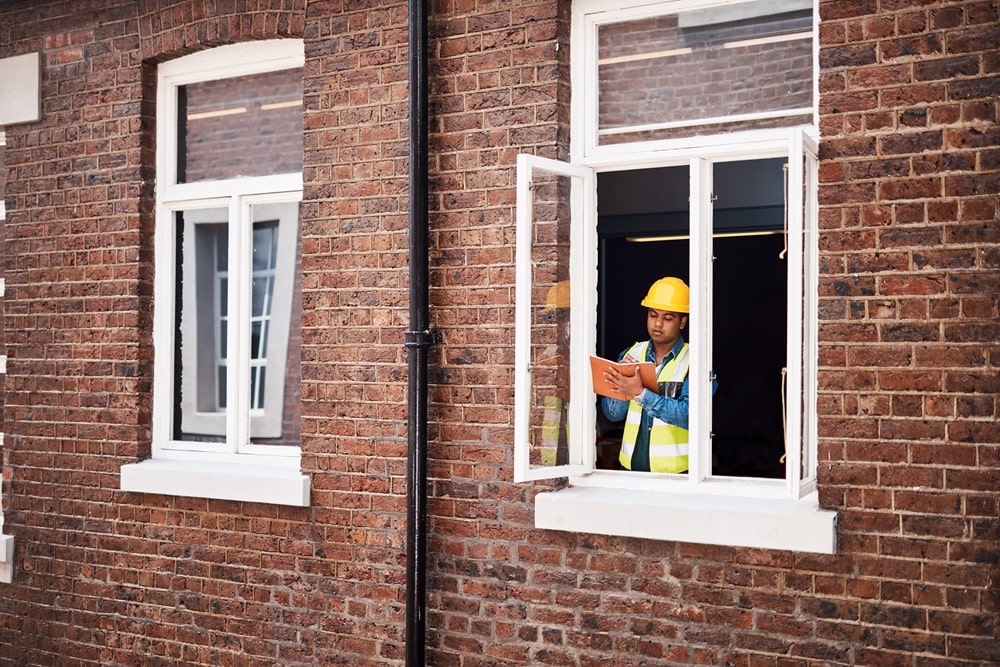
Window replacement is one of the most impactful upgrades you can make to your home—not just for looks, but for comfort, energy efficiency, and long-term value. One of the first choices you need to make is the material of the window frame, and it’s not a one-size-fits-all decision.
Each material offers its own strengths and trade-offs. Some are ideal for low-maintenance living, while others shine when it comes to aesthetics or energy savings. Let’s break down the most common window materials so you can find the right fit for your space and lifestyle.
Why Window Material Matters
While the glass is important, it’s the frame that often determines how well a window performs over time. The material impacts:
-
- Insulation (keeping heat in or out)
-
- Resistance to moisture and weather
-
- Ongoing maintenance
-
- Lifespan
-
- Style compatibility with your home
Choosing wisely can help reduce utility costs, improve comfort year-round, and boost your home’s curb appeal.
Key Factors to Consider When Choosing Window Materials
Before you commit, take these into account:
- Climate: Humidity, heat, freezing temperatures, and coastal air all affect material performance.
- Budget: Initial cost vs. long-term value and durability.
- Maintenance: How much upkeep are you willing to do?
- Aesthetic Goals: Do you want modern, traditional, or somewhere in between?
- Energy Efficiency: The frame contributes to thermal performance, especially when paired with efficient glass.
Common Window Frame Materials: Pros and Cons
Let’s take a closer look at the top materials you’ll see when shopping for windows.
1. Vinyl Windows
Vinyl has become the go-to material for homeowners looking for affordability and low maintenance.
Pros
-
- Cost-effective: One of the most budget-friendly window options.
- Low maintenance: No painting or sealing required.
- Energy efficient: Provides decent insulation when installed correctly.
- Durable: Resistant to rot, moisture, and insects.
Cons
-
- Limited design flexibility: Fewer color and finish options.
- Not paintable: What you buy is what you’re stuck with.
- Can warp: Especially in high heat or full sun exposure over time.
Best For: Homeowners on a budget or looking for quick upgrades with minimal upkeep.
2. Wood (and Clad-Wood) Windows
Wood remains a timeless favorite, especially for older or architectural homes where charm and authenticity matter.
Pros
- Classic look: Rich textures and tones that suit traditional designs.
- Natural insulator: Excellent at keeping heat in and cold out.
- Clad options available: Aluminum or vinyl exterior protects wood inside, reducing maintenance.
Cons
-
- Maintenance required: Needs painting or sealing to prevent rot and damage.
- Higher price point: More expensive than vinyl or aluminum.
- Sensitive to moisture: Unprotected wood can warp or swell.
Best For: Historic homes or those prioritizing aesthetics and character.
3. Fiberglass Windows
Fiberglass combines durability with strong thermal performance, making it a smart pick for homeowners looking for something long-lasting.
Pros
- Strong and stable: Resists warping, cracking, and swelling.
- Excellent insulation: Often more efficient than vinyl or aluminum.
- Low maintenance: Won’t need painting or sealing.
- Can mimic wood: Textures and finishes available that resemble painted wood.
Cons
-
- Higher cost: More expensive than vinyl, though typically less than premium wood.
- Limited finish options: Not as many color choices as other materials.
Best For: Homeowners who want a balance between performance, longevity, and clean design.
4. Aluminum Windows
Aluminum is often used in commercial settings, but has a place in modern homes that prioritize slim, minimalist lines.
Pros
-
- Sleek appearance: Thin frames allow for more glass and expansive views.
- Durable: Resists dents, warping, and corrosion.
- Low maintenance: No need for paint or treatments.
Cons
-
- Poor insulation: Conducts heat and cold unless upgraded with a thermal break.
- Condensation risk: Can attract moisture buildup in cold weather.
- Not ideal for all climates: Performs best in milder regions.
Best For: Contemporary designs or warm climates where insulation demands are lower.
How to Choose the Right Material for Your Home
There’s no one-size-fits-all answer, but you can narrow your options by asking:
-
- What’s your climate like? Coastal? Cold winters? High heat? Some materials hold up better than others in extreme conditions.
- How much maintenance are you comfortable with? If you want to “set it and forget it,” avoid wood unless it’s clad.
- What’s your home’s style? A sleek fiberglass frame might look out of place in a colonial, just as stained wood might clash with a modern build.
- Are you investing for resale or forever? Spending more now on fiberglass or wood may pay off in long-term value—especially if energy savings or design impact are top priorities.
Final Tips for Picking the Best Window Material
Window replacement is more than a cosmetic fix—it’s an investment in how your home feels, functions, and lasts. Each material brings something different to the table:
-
- Vinyl is affordable and easygoing
-
- Wood adds charm and warmth
-
- Fiberglass blends strength with energy savings
-
- Aluminum fits sleek, modern aesthetics
Take your time to compare, ask questions, and think beyond just the price tag. The right window material can lower energy bills, reduce maintenance, and add lasting comfort and beauty to your home.
Need help choosing the perfect window for your Boston home?
Reach out to Boston Doors and Windows for expert guidance, honest advice, and professional installation—designed to suit your style, budget, and local climate.
